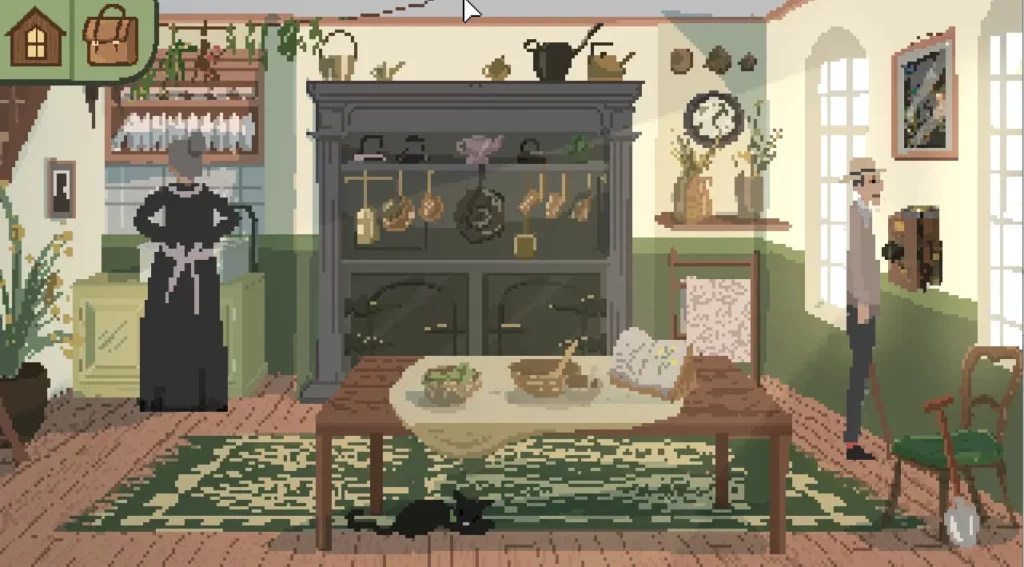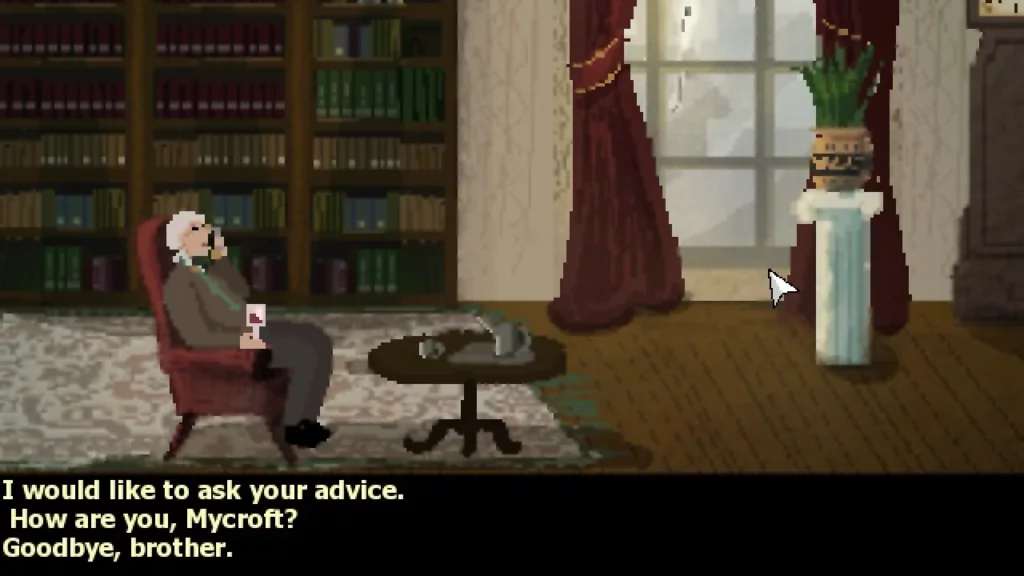The Beekeeper’s Picnic provides a moving exploration of Sherlock Holmes’ retirement years, combining pastoral charm with emotional storytelling. This point-and-click adventure allows players to experience the relationship between an aging Holmes and elderly Dr. Watson. The narrative unfolds with gentle humour and subtle references to Arthur Conan Doyle’s beloved works, presenting a more contemplative version of the famous detective.
From Baker Street to Countryside Solitude
The story begins at the conclusion of The Adventure of the Three Garridebs, where Watson suffers a minor gunshot wound. The scene then transitions to the familiar surroundings of 221B Baker Street, where Holmes struggles to inform Watson about his plans to retire, instead falling back on deduction habits to avoid emotional confrontation.


Holmes eventually relocates to the Sussex Downs to pursue beekeeping, a future first referenced in The Adventure of the Lion’s Mane. The Beekeeper’s Picnic continues this thread, presenting a reflective Holmes in 1918, now living in Fulworth with a stern housekeeper named Martha. The town features locations that echo The Lion’s Mane, including The Gables school and its amiable headmaster, Harold Stackhurst.
When Watson returns from serving as a medic in World War I to visit Holmes, their reunion is filled with unspoken emotion. Holmes, now older and more introspective, wishes to make amends for past coldness through a simple gesture—arranging a peaceful picnic.
Classic Gameplay with Heart
This touching narrative unfolds through traditional point-and-click mechanics. Players guide Holmes through whimsical tasks such as entering a honey competition and finding a missing cat to obtain elderflower cordial. The game allows exploration of Holmes’ “brain-attic,” where players connect deductions on a mental chalkboard and reflect on his relationships. A minor case involving stolen taxidermy from a museum gradually intertwines with village events.
Despite these investigative elements, the game remains focused on character development. Unlike typical Holmes adventures centred on criminal masterminds, this story emphasises emotional growth, with Holmes more concerned about local children’s welfare than apprehending culprits.
Player Agency and Emotional Nuance
Interestingly, players can choose to invite Watson to the picnic immediately, bypassing the side stories. This results in a comically imperfect event with no refreshments and noisy beachgoers, though the credits still roll. Alternatively, investing time in the village narratives leads to a more satisfying outcome, with Watson acknowledging Holmes’ positive influence on the community.
At the heart of the story lies the unspoken question of Holmes’ feelings for Watson. Traditionally portrayed as emotionally distant, Holmes shows signs of change in this game. Years of isolation and war trauma appear to have softened him, adding touching complexity to their bond as he attempts to express long-suppressed emotions.

Emotional Foundations
The decision to begin with the conclusion of The Three Garridebs proves significant. It represents one of the rare moments in Doyle’s canon where Holmes displays genuine concern for Watson. When Watson is shot, Holmes reacts with uncharacteristic alarm, striking their attacker and urging Watson to confirm he’s unharmed. Watson later reflects that this moment revealed the depth of loyalty behind his companion’s usual detachment.
This emotional thread carries throughout the game, framing Holmes’ desire to express feelings he previously kept hidden. The story never dictates the exact nature of their relationship—allowing players to interpret it as romantic, platonic, or something undefined.
Understated Excellence
What follows is a humble yet powerful story of connection, allowing players to interpret the bond between Holmes and Watson according to their own perspective. Whether viewed as romantic affection, deep friendship, or something between, the game emphasises the presence of love rather than its classification.
The voice performances enhance the experience significantly. Holmes and Watson are portrayed with measured grace by James Quinn and Andrew James Spooner, who avoid exaggerated mannerisms often associated with the characters. Their interactions convey dignified warmth, complementing the game’s gentle atmosphere. Older actors were deliberately cast to match the characters’ life stages, adding authenticity to their portrayals.
The supporting cast delivers equally impressive performances. Richard Rycroft voices Mycroft Holmes, providing in-game hints via telephone calls from the Diogenes Club. Alison Skillbeck appears as Mrs. Whitlock, while Felix Trench delivers an outstanding performance in a touching subplot that adds profound emotional resonance, though many players might overlook it.

A Gentle Masterpiece
Despite its modest pixelated art style—beautifully animated nonetheless—The Beekeeper’s Picnic delivers a rich and moving experience. From Toby III the talking dog to a chatty stuffed bear in the background, the game overflows with charm. Its exploration of the relationship between Holmes and Watson is handled with sensitivity, avoiding cliché or excessive sentimentality.
Helen Greetham, the solo developer, wrote, coded, and illustrated the entire game. Her work honours Sherlock Holmes while expanding the canon in a respectful and refreshing manner.
The Beekeeper’s Picnic stands as a tender epilogue to one of literature’s most iconic partnerships—a beautifully crafted reflection on love, regret, and the enduring bond between two old friends.
Read more our reviews.
